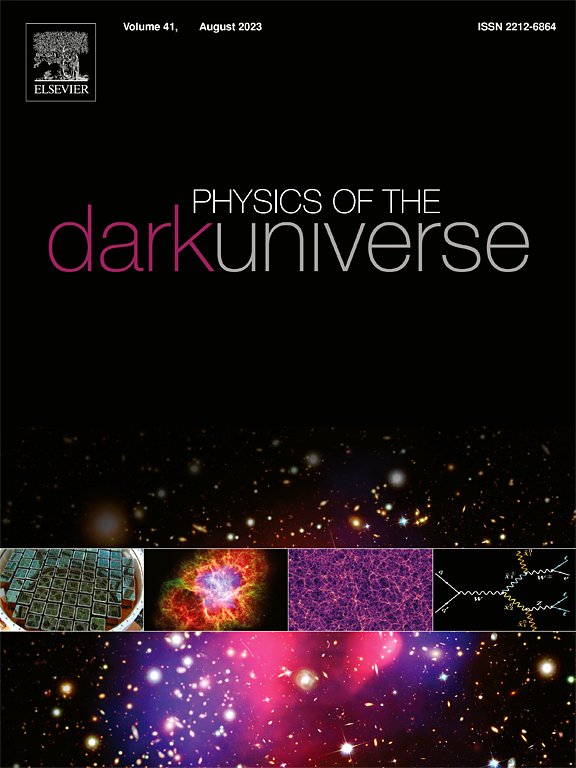天体物理黑洞时空中脉冲星信号的时间延迟
IF 6.4
2区 物理与天体物理
Q1 ASTRONOMY & ASTROPHYSICS
引用次数: 0
摘要
在本文中,我们研究了脉冲星信号在旋转黑洞及其潜在模仿者附近传播的完全相对论性时间延迟,包括变形Kerr黑洞和Janis-Newman-Winicour裸奇点。我们的目标是计算和比较由不同时空几何形状引起的脉冲星时间延迟,以探索区分黑洞及其替代品的可能观测特征。我们首先在这些背景几何中求解零测地线的运动方程。随后,我们解决了发射-观测器问题,以计算脉冲星信号在克尔、变形克尔和JNW时空中的时间延迟。通过对史瓦西黑洞和克尔黑洞的比较分析,我们可以观察到自旋对脉冲星计时传播延迟的影响。进一步研究了变形克尔黑洞中变形参数的影响以及标量场对旋转的JNW时空的影响。我们的研究考虑了赤道圆轨道源发射的直接光子和间接光子。我们发现,当我们比较克尔黑洞与变形克尔和旋转JNW时空的时间延迟情况时,自旋参数的变化显示出非常小但可检测的变化。我们的脉冲星时间延迟结果提示了这些天体物理黑洞几何形状的潜在可观测特征,这可能对即将到来的观测设施如平方公里阵列天文台、500米口径球面望远镜和事件视界望远镜有用。本文章由计算机程序翻译,如有差异,请以英文原文为准。
Time delay of pulsar signals in astrophysical black hole spacetimes
In this paper, we investigate the fully relativistic time delay of pulsar signals propagating in the vicinity of a rotating black hole and its potential mimickers, including a deformed Kerr black hole and the Janis–Newman–Winicour naked singularity. We aim to compute and compare the pulsar time delays caused by different spacetime geometries to explore possible observational signatures that distinguish between black holes and their alternatives. We begin by solving the equations of motion for null geodesics in these background geometries. Subsequently, we address the emitter-observer problem to compute the time delay of pulsar signals in Kerr, deformed Kerr, and JNW spacetimes. A comparative analysis between Schwarzschild and Kerr black holes allows us to observe the effect of spin on propagation delay in pulsar timing. Further, we examine the impact of the deformation parameter in the deformed Kerr black hole and the influence of the scalar field on the rotating JNW spacetime. Our study considers both direct and indirect photons emitted by a source in the equatorial circular orbit. We find that the variations in the spin parameter show very small but detectable changes when we compare the time delay cases of a Kerr black hole with deformed Kerr and rotating JNW spacetimes. Our pulsar time delay results suggest a potential observable distinguishing feature of these astrophysical black hole geometries which could be useful for the forthcoming observational facilities such as Square Kilometer Array Observatory, Five-hundred-meter Aperture Spherical Telescope and Event Horizon Telescope.
求助全文
通过发布文献求助,成功后即可免费获取论文全文。
去求助
来源期刊

Physics of the Dark Universe
ASTRONOMY & ASTROPHYSICS-
CiteScore
9.60
自引率
7.30%
发文量
118
审稿时长
61 days
期刊介绍:
Physics of the Dark Universe is an innovative online-only journal that offers rapid publication of peer-reviewed, original research articles considered of high scientific impact.
The journal is focused on the understanding of Dark Matter, Dark Energy, Early Universe, gravitational waves and neutrinos, covering all theoretical, experimental and phenomenological aspects.
 求助内容:
求助内容: 应助结果提醒方式:
应助结果提醒方式:


